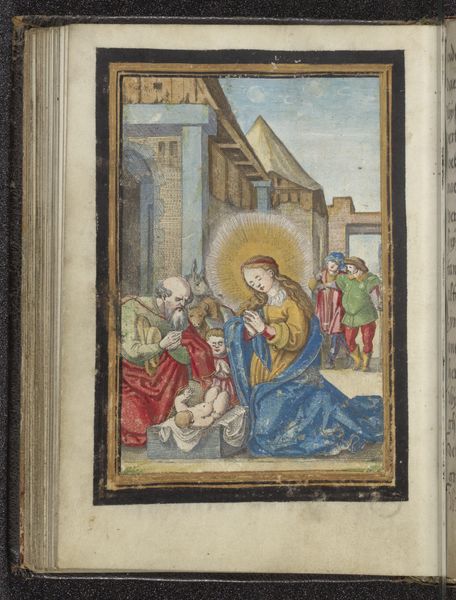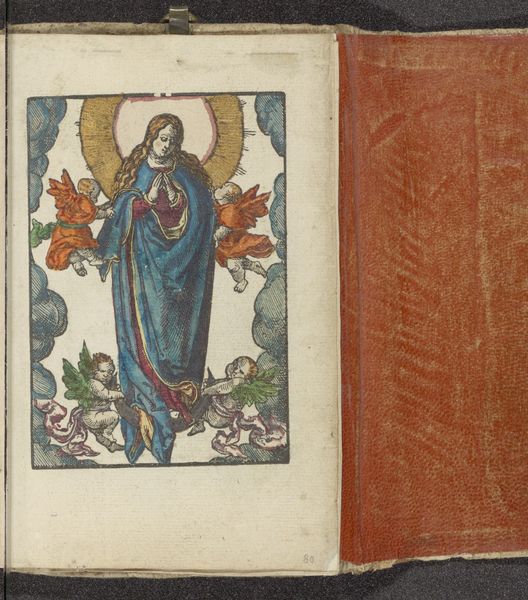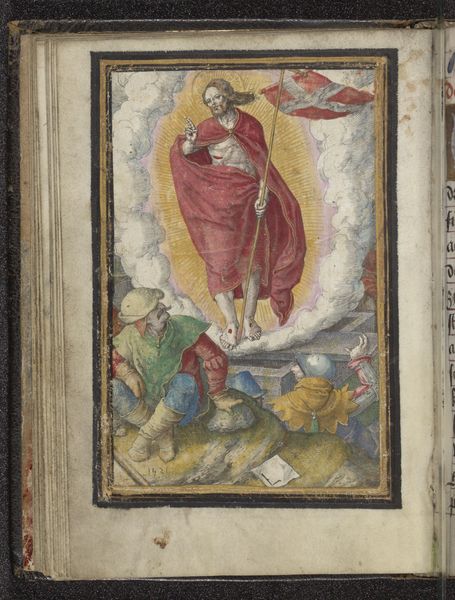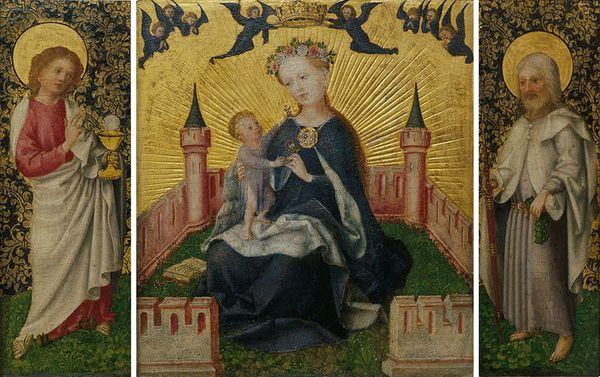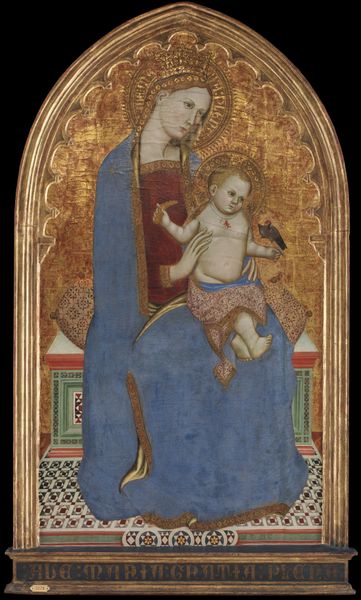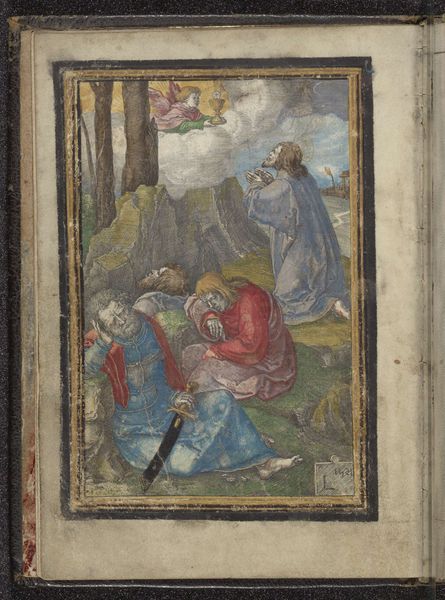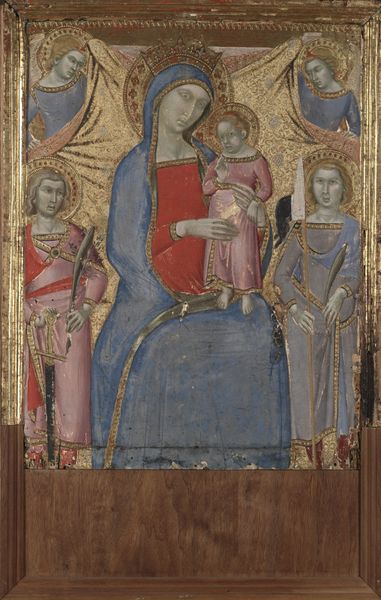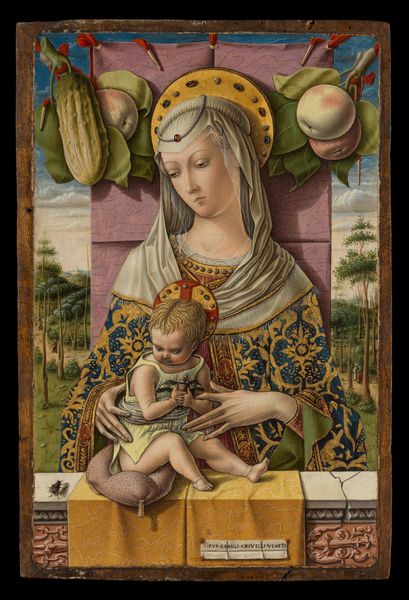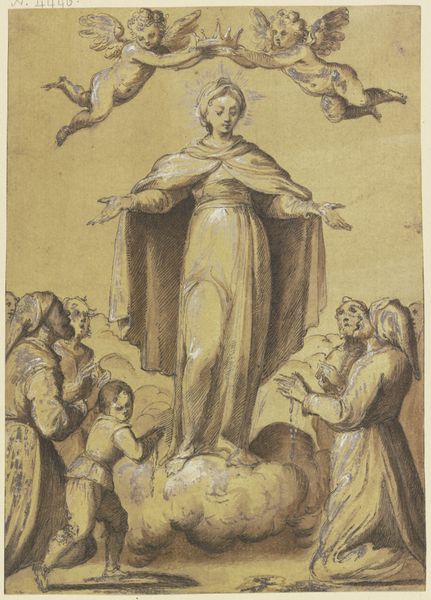
print, ink
# print
#
figuration
#
oil painting
#
ink
#
history-painting
#
italian-renaissance
#
miniature
Dimensions: height 149 mm, width 105 mm
Copyright: Rijks Museum: Open Domain
Jacob Binck created this tiny, hand-colored woodcut of the Virgin and Child sometime in the first half of the 16th century. It shows the Virgin Mary seated, holding the infant Jesus, while an angel descends from the heavens to crown her. Produced in Germany during the Reformation, this image reflects the period's complex religious and political landscape. The Catholic Church, a powerful institution, was facing challenges from the rise of Protestantism. Woodcuts like this were often made as devotional aids, circulated among the faithful. The image employs traditional symbols of Mary’s purity and status, such as the halo and the crown, while the naturalistic landscape connects the divine figures to the everyday world. The act of crowning by an angel emphasizes Mary's role as the Queen of Heaven, a doctrine that was increasingly questioned by Protestants. Understanding the image requires us to look at the religious and social context of its creation. Researching the history of the Reformation and the role of religious imagery can help us better understand the cultural forces that shaped this artwork.
Comments
No comments
Be the first to comment and join the conversation on the ultimate creative platform.
